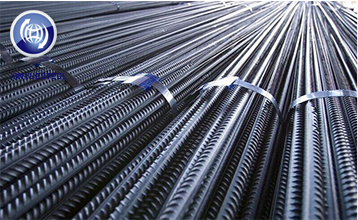The rise in coal prices is long overdue, and the subsequent coal market continues to improve
Sep. 14, 2020
In recent months, electricity consumption has returned to positive year-on-year, which is affected by the increase in civilian electricity consumption such as the arrival of summer and rising temperatures. However, the gradual recovery of the overall economy, the rapid resumption of work and production, and the strong development of new momentum are the main reasons. In the first half of last week, the supply and demand sides of the port market were in a stalemate, and prices continued to show a weak balance. Starting from last weekend, the price of thermal coal in the Bohai Rim has passed a stable period and entered a rising stage.
In terms of production area, due to the inversion of coal prices, the enthusiasm of shipping companies for shipping and sales has declined. In addition, the demand for direct power supply plants in the north has increased. The flow of coal trucks on the Daqin and Tanghu lines to the Bohai Rim has decreased, and high-quality resources are in short supply. Port coal prices are unlikely to continue to fall. While the high inventory of power plants has dropped slightly, the superposition has entered the end of the high temperature weather, the peak power consumption has passed, and the hydropower output has maintained a high level. The off-season is approaching, power plant inventories are not low, and port coal prices are also unlikely to rise sharply.

On the demand side, thermal coal consumption is facing a seasonal decline, but downstream replenishment demand may increase. As the temperature drops, the air-conditioning electricity load will drop, and the electricity demand will drop seasonally. Although hydropower output will also drop seasonally from September, based on previous years, hydropower output will continue until late September. Thermal power generation and coal consumption by coastal power plants will still decline to a certain extent. Taking into account that the inventory of key power plants has declined rapidly in the past month, and some power plants have purchased coal for heating and winter storage in advance, it is expected that from mid-September, users along the coast and rivers will have increased demand for replenishment and have a strong sense of bottom hunting. Up to now, of the 32 ships anchored at Qinhuangdao Port, as many as 25 ships have gone through formalities.
Driven by a series of policy measures such as steady growth and expansion of domestic demand, my country’s economic construction will accelerate its recovery, the infrastructure and real estate markets in various regions will gradually recover, and the demand for steel and cement markets will accelerate the release, prompting downstream consumer companies and trading companies to purchase thermal coal from northern ports. Purchasing enthusiasm heats up. Entering September, the traditional peak season of “Golden Nine and Silver Ten” is coming, superimposed on the recovery of traditional infrastructure projects, the trend of cement market is expected to continue, the relationship between market supply and demand continues to improve, and coal transportation at Bohai Rim ports will become more busy. As the impact of the rainy season in the south has weakened, especially in East China and the Yangtze River Delta, the rainwater has decreased, and the rate of infrastructure construction has rebounded rapidly, resulting in a concentrated release of demand.
While the coal import policy is not relaxed, two consecutive accidents on the Daqin line in mid-to-late August obviously affected the transfer of coal from the port. In addition, in early October, the Da-Qin line was about to begin autumn intensive repairs, and some coastal users replenished the warehouse in mid-to-late September. Demand will also increase. It is estimated that in mid-to-late September, coal prices in the port market will increase by 10-20 yuan/ton.



